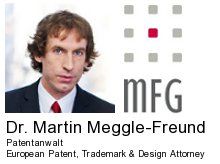Anzeigen:
Seitenleiste
Inventions Patentable
Whoever invents or discovers any new and useful process, machine, manufacture, or composition of matter, or any new and useful improvement thereof, may obtain a patent therefor, subject to the conditions and requirements of this title.
35 U.S.C. § 101. The statute thus recites four categories of patent-eligible subject matter: processes, machines, manufactures, and compositions of matter.
The term „process“ is ordinarily broad in meaning, at least in general lay usage. In 1952, at the time Congress amended § 101 to include „process,“ the ordinary meaning of the term was: „[a] procedure . . . [a] series of actions, motions, or operations definitely conducing to an end, whether voluntary or involuntary.“.1)
A person may have “invented” a machine or a manufacture, which may include anything under the sun made by man, but it is not necessarily patentable under section 101 unless the conditions of the title are fulfilled.2)
This provision contains an important implicit exception: Laws of nature, natural phenomena, and abstract ideas are not patentable.3)
Process
The Supreme Court has held that the meaning of „process“ as used in § 101 is narrower than its ordinary meaning.4)
Specifically, the Court has held that a claim is not a patent-eligible „process“ if it claims „laws of nature, natural phenomena, [or] abstract ideas.“.5)
Such fundamental principles are „part of the storehouse of knowledge of all men . . . free to all men and reserved exclusively to none.“.6)
A principle, in the abstract, is a fundamental truth; an original cause; a motive; these cannot be patented, as no one can claim in either of them an exclusive right.7)
Phenomena of nature, though just discovered, mental processes, and abstract intellectual concepts are not patentable, as they are the basic tools of scientific and technological work.8)
Software
Machine-or-transformation test
A claimed process is surely patent-eligible under § 101 if: (1) it is tied to a particular machine or apparatus, or (2) it transforms a particular article into a different state or thing.9) → Machine-or-transformation test
Useful, concrete and tangible result
The claimed invention as a whole must be useful and accomplish a practical application. That is, it must produce a „useful, concrete and tangible result“.10) → useful, concrete and tangible result
siehe auch
Art. 52 EPÜ → Patentierbare Erfindungen
Konzept, Struktur und Gestaltung: © Dr. Martin Meggle-Freund
Nutzungsbedingungen - Hinweise zum Datenschutz
Impressum
Partnerprojekte: waidlerwiki.de - chiemgau-wiki.de



